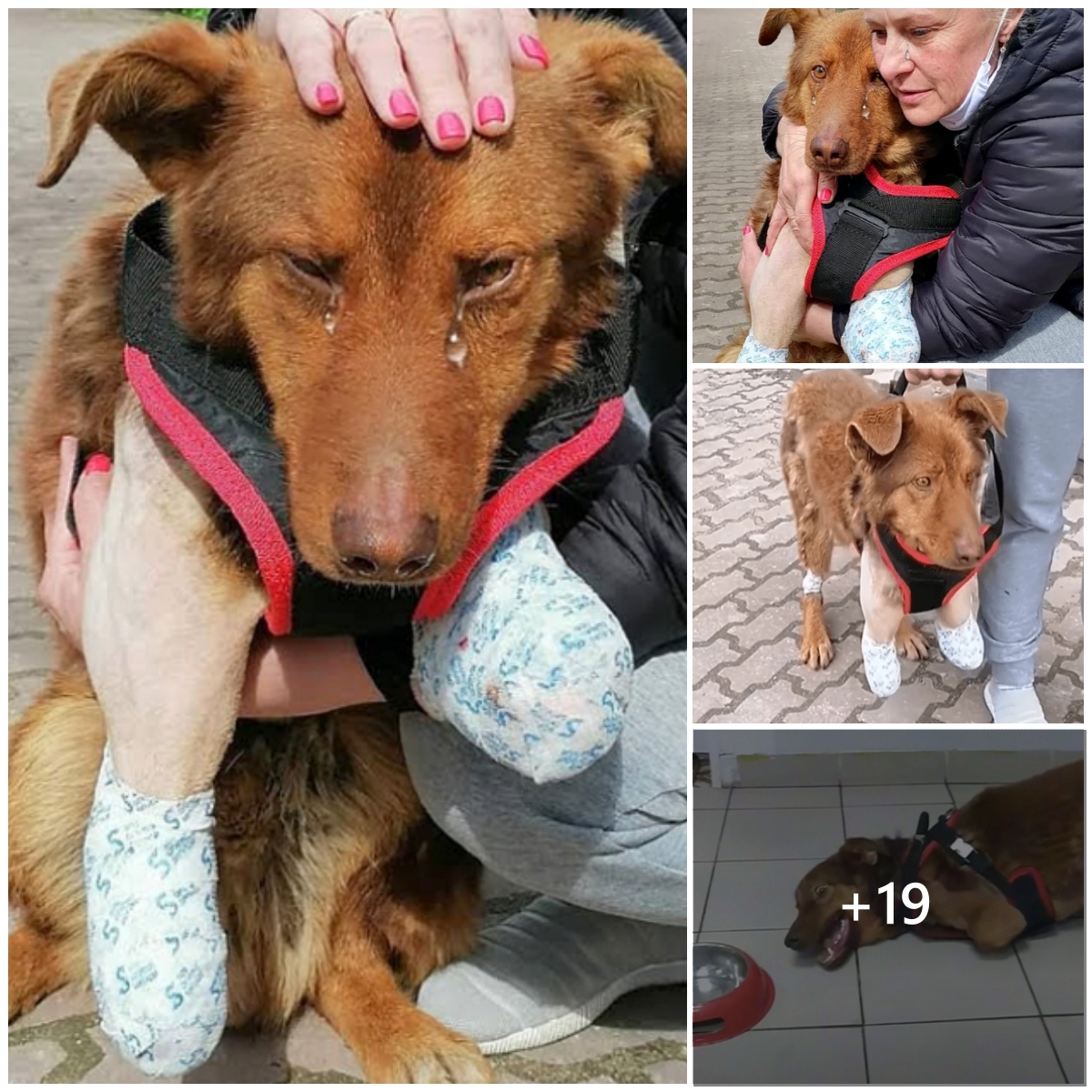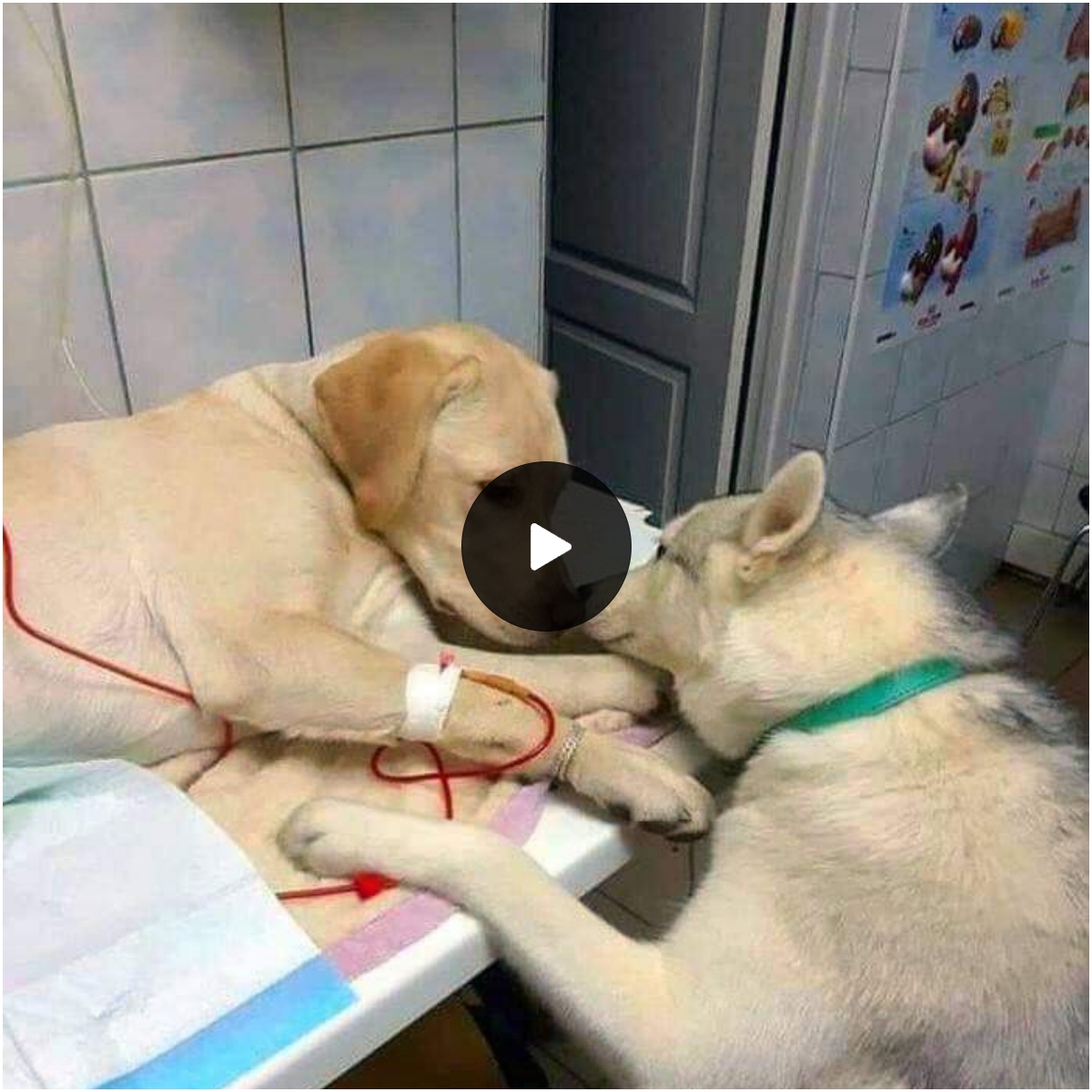When thinking about animals that have flown into space, people often think of Laika – the famous dog that has flown into space. Few people will mention Félicette – a “cadet” cat who also performed a similar mission but was forgotten.
In October 1963, a small black-and-white cat named Félicette traveled where no cat had gone before – beyond Earth. But why is Félicette overlooked while Laika is so loved? Maybe it’s because her rocket looks like a “firework” compared to Laika’s giant, powerful rocket. Or maybe it’s because she’s just flying to the edge of space, on the same type of flight and trajectory that today’s billionaires can fly to with just enough money. Félicette’s story is both brilliant, but also sad because it has never been given the recognition it deserves.
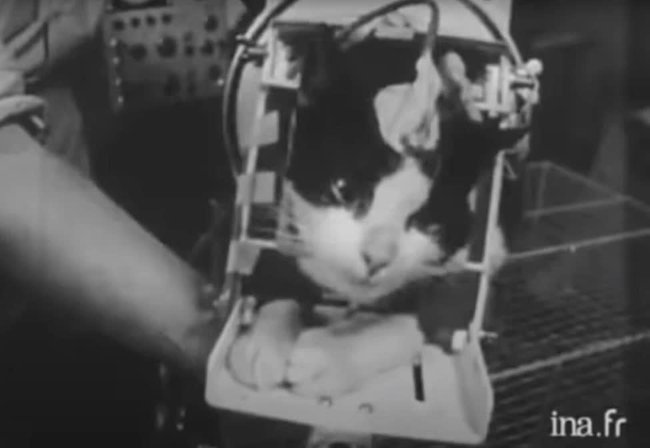
Félicette, the first cat to fly into space, is strapped into the ejection seat to be loaded into the Veronique rocket.
Why was Félicette chosen for space flight?
Félicette’s story begins in 1961. After a series of successful flights by superpowers sending animals into space, France decided to carry out a project of its own, using cats instead of dogs or monkeys, in the hope of collecting data about the vast universe without using real astronauts.
The 14 female cats were later acquired by space scientists from the French CERMA center. To prevent scientists from getting attached to them, the cats are given numbers instead of names. They are fitted with electrodes to record brain activity. The cats then undergo rigorous and arduous “astronaut training.” To test their reactions to captivity, cats were placed in small containers for long periods of time. They are also spun around in a centrifuge, simulating the G-forces of spacecraft takeoff and landing.
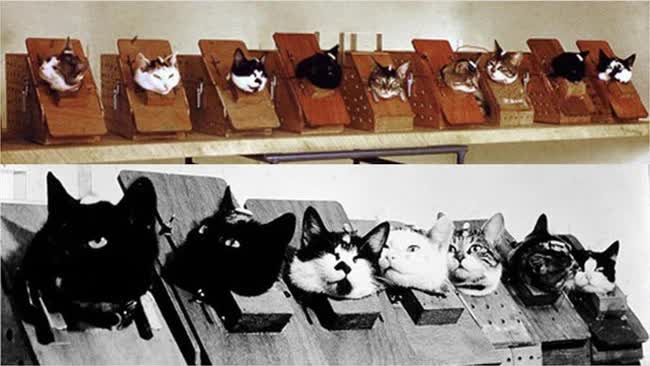
Pictures of cats at “space training camp”
In the end, six cats were chosen to move on to the next stage, including one cat then known only as C341.
C341 would not have been chosen, if the cat that was originally intended to fly into space did not run away before the mission.
The historic day when Félicette flew beyond Earth
Laika the dog flew into orbit atop a tall, massive Sputnik rocket, very similar to the Vostok booster that would carry Yuri Gagarin. The C341’s slender Veronique AGI booster is much simpler, looking more like a rocket from a child’s drawing. It doesn’t even use a conventional launch tower. Instead, its weight is supported by 4 long bases, like the legs of a Christmas tree stand.
On October 18, 1963, at 8 a.m. local time, the Veronique rocket was launched from the French Special Vehicle Testing Center in the middle of the Sahara desert in Algeria, carrying the little kitten with it.
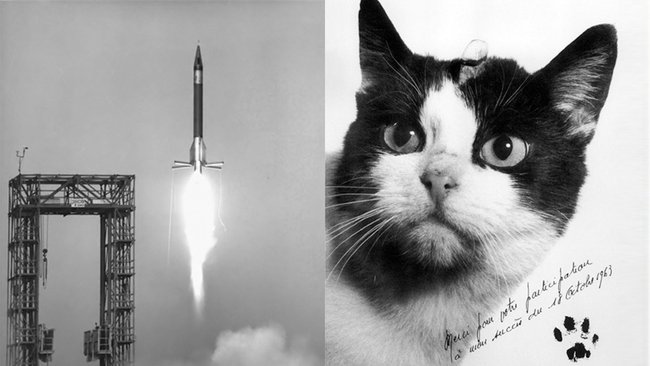
C341 was an unexpected choice
Encased inside its “capsule,” the tiny C341 experienced 9.5 g of pressure, nearly twice the g-force that the Apollo astronauts endured as they were launched to the Moon, at twice the speed 5 – 6 times the speed of sound. After reaching an altitude of 157km, C341 was only actually in space for about 5 minutes. Inside her capsule, the cat cannot see Earth.
As the rocket begins to descend, the capsule separates from the booster. C341 experienced “only” 7 g of pressure as she fell, until the capsule’s parachute opened. 13 minutes after takeoff, the cone-shaped capsule landed, leaving C341 hanging upside down, until a helicopter arrived and took the cat away.
Once C341 returned safely to Earth, it was time for France to let the world know about its flight. So finally the world’s first cat to fly into space also has a name: Félicette.
The outcome is forgotten
Sadly, like Laika, Félicette’s story does not have a happy ending.
Two months after landing, the brave cat had to be euthanized so scientists could conduct an autopsy. From the beginning, their aim was to study how Félicette’s body was affected by the flight.
They then came to the conclusion that they learned nothing useful from studying Félicette’s body. After that, no more cats flew into space and France never sent its astronauts into space.

Félicette was killed by researchers for research purposes
Even though she sacrificed herself for science, since then, Félicette the cat has never been mentioned by anyone’s name. She is not honored, not printed on stamps, not praised by any media as a “heroic cat” like other animals with the same mission of flying into space. Félicette was forgotten mainly because French scientists were not as successful as expected with her project.
Many years later, Félicette was “rediscovered” by fans of the astronomical universe. In 2019, an adorable statue of the cat was unveiled at the International Space University Campus in Strasbourg.
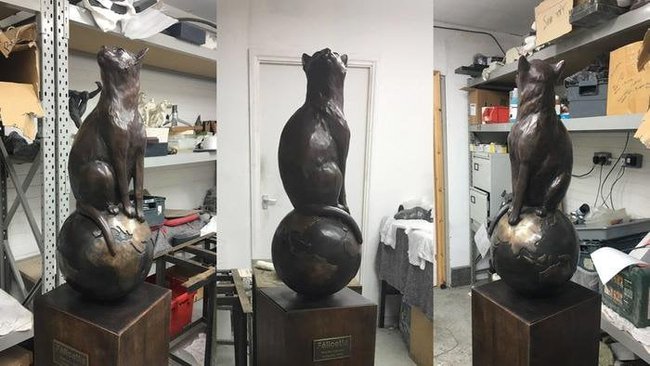
Fans made their own statue of Félicette to commemorate her




